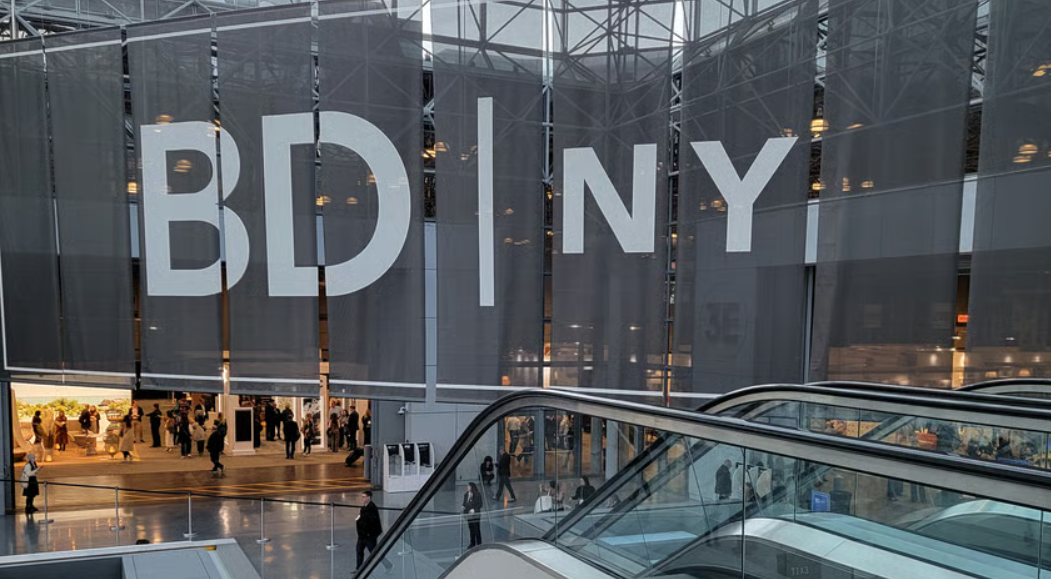Hospitality and Workplace interior designers have industry specific terms they need to know – especially when writing furniture specifications. Knowledge of FF&E spec writing terms and definitions are critical when producing spec books and managing design projects. Here a few interior design specific terms and definitions that any interior designer should be familiar with.
Accessories
- Items that personalize and add character to a space, such as vases and cushions.
Certifications
- BIFMA: The Business and Institutional Furniture Manufacturers Association, a non-profit trade organization founded in 1973, sets standards for furniture safety and performance.
- Greenguard Certified: A certification indicating that a product has low chemical emissions and contributes to healthier indoor environments.
- LEED Certified: A certification for buildings that meet specific standards for sustainability and environmental friendliness as set by the Leadership in Energy and Environmental Design.
Design and Innovation
- Acoustic Solutions: Implementing strategies and products to enhance sound quality and reduce noise in a given space.
- Brand Identity Integration: Incorporating a company’s brand elements seamlessly into design and decor to reinforce brand presence.
- Budget Management: Overseeing financial planning to ensure projects are completed within allocated resources without compromising quality.
- Client Consultation: Engaging with clients to understand their needs, preferences, and goals to deliver tailored solutions.
- Compliance and Regulations: Ensuring that all design and project implementations adhere to legal and industry standards.
- Custom Furniture Design: Crafting unique and personalized furniture pieces tailored to specific tastes and functional needs.
- Design Innovation: Introducing novel and creative design concepts to enhance aesthetic and functional appeal.
- Interior Environments: Designing and organizing indoor spaces to create aesthetically pleasing and functional environments.
- Online Furniture Store such as SpecStore: A digital platform where customers can browse and purchase furniture pieces.
- Streamline Proposals: Simplifying and improving efficiency in the creation and presentation of project proposals to clients.
- Sustainability Design: Incorporating eco-friendly and sustainable practices into design to minimize environmental impact.
- Trend Analysis: Studying and applying current design and market trends to keep projects modern and relevant.
- Vendor Coordination: Managing and liaising with suppliers to ensure timely delivery and quality of products and services.
- Workspace Optimization: Enhancing the layout and functionality of workspaces to improve efficiency, productivity, and comfort. in the production process.
Design and Planning
- Color Theory: The study of color combinations and their impact on design and aesthetics.
- Construction Documents: Detailed drawings and specifications used in the building process.
- Design Collaboration: The process of working together with other professionals to create cohesive and effective design solutions.
- Furniture Selection: The process of choosing appropriate furniture pieces to suit a space’s function and style.
- Lighting Design: The art of planning and implementing lighting to enhance the appearance and mood of a space.
- Material Sourcing: The process of finding and acquiring materials for construction and design projects.
- Sustainable Design: Creating spaces and products with minimal environmental impact, focusing on efficiency and resource conservation.d information about a product.
- Memo Samples: Small samples of materials used to showcase texture, color, and quality before making a purchase decision.
- Prototypes: Initial models or samples created to test and evaluate a design before full-scale production.
- Shop Drawing: Detailed drawings submitted by contractors or manufacturers that show how specific elements of a project will be constructed.
Fixtures
- Permanent installations: Sinks, lights, and bathtubs enhance functionality and convenience in a building.
Floor Coverings
- Carpets: Floor coverings that add warmth and texture to a room.
- Rugs: Decorative floor coverings that add color and comfort to a space.
Furniture
- Beds: Furniture designed for sleeping, available in various sizes and styles.
- Cabinets: Storage units with doors and shelves, used for organizing items.
- Chairs: Seating furniture designed to provide support and comfort, available in different styles.
- Desks: Work surfaces designed for productivity, often featuring storage options.
- Mattresses: Supportive surfaces for sleeping, designed for comfort and durability.
- Seating: Various types of chairs and sofas designed for comfort and style.
- Shelving: Structures used to hold and display items, promoting organization.
- Sofas: Large, upholstered seating pieces designed for comfort and relaxation.
- Tables: Surfaces used for dining, work, or decoration, available in various shapes and sizes.
Government
- GSA: General Services Administration, a U.S. government agency that provides products and services for government offices.
Industry Sectors
- Education: An interior design sector dedicated to teaching and learning, including schools, colleges, and universities.
- Healthcare: An interior design industry sector focused on providing medical services and products to maintain or improve health.
- Hospitality: An interior design industry sector focused on providing services such as lodging, food, and entertainment to guests.
- Workplace/Commercial: An interior design industry sector that focuses on the strategic planning and arrangement of a work environment to optimize functionality, enhance employee well-being, and boost productivity by considering factors like layout, furniture, lighting, acoustics, and technology.
Lighting
- Devices and systems: used to illuminate spaces, enhancing both functionality and ambiance.
Materials and Finishes
- COL (Customer’s Own Leather): Leather supplied by customers for product creation, selected to match specific texture, color, and quality preferences. Manufacturers assess the leather for compatibility and durability in the production process.
- COM (Customer’s Own Material): Fabric or materials provided by customers for product creation, chosen to meet specific aesthetic or functional needs. Manufacturers verify material quality to ensure it meets production standards.
- Hard Finishes: Durable surface materials used in construction and design, such as wood, stone, or metal.
- Pattern Matching: The process of aligning patterns at seams or joints to ensure a cohesive and continuous design.
- Strike Off: A sample of fabric or wallpaper produced to check colors and patterns before full production.
- Submittals: Documents, samples, or mock-ups submitted for approval before final production or construction.
Project and Document Management
- Product Sheet: Documents providing detailed product information, including specifications and usage instructions.
- Cut Sheet: Detailed specifications and information about a product, including dimensions, materials, and installation instructions.
- Specification Sheets: Documents outlining the technical and material requirements for project products and systems.
- Product Catalogs: Collections of product offerings from manufacturers, with information on styles, finishes, and options.
- Installation Guides: Step-by-step instructions for proper and efficient installation of products and materials.
- Punch List: A list of tasks or items that need to be completed or corrected before a project is considered finished.
- Organizing tasks and resources: Systematically arranging and prioritizing tasks while efficiently allocating resources to ensure smooth workflow and productivity.
- Planning to achieve specific goals within a set timeframe: Strategically outlining steps and setting deadlines to accomplish objectives within a predetermined schedule.
- Overseeing tasks and resources: Supervising the execution of tasks and the utilization of resources to maintain progress and quality.
- Developing a clear vision of the project: Crafting a detailed and comprehensive plan that outlines the project’s purpose, objectives, and desired outcomes.
- Coordinating with clients and team members: Facilitating effective communication and collaboration between clients and team members to ensure alignment and understanding.
- Managing budgets: Carefully monitoring and controlling financial expenditures to stay within budgetary constraints while maximizing value.
Professional Organizations
- IIDA: he International Interior Design Association (IIDA) was founded in 1994, resulting from the merger of the Institute of Business Designers (IBD), the International Society of Interior Designers (ISID), and the Council of
- Federal Interior Designers: CFID International Interior Design Association, a professional networking and educational association for interior designers.
- NCIDQ: The National Council for Interior Design Qualification (NCIDQ), now known as the Council for Interior Design Qualification (CIDQ), was founded in 1974. Provides certification for interior designers.
- NEWH: Now known as The Hospitality Industry Network, founded in 1984 by a group of women with the goal of promoting achievement for women in the hospitality industry.
Technology
- 3D Modeling: The creation of three-dimensional digital representations of objects or spaces.
- AutoCAD: Computer-aided design (CAD) software that is used for 2D and 3D drafting, design, and modeling with solids, surfaces, mesh objects, documentation features, and more. Owned by Autodesk.
- Bluebeam: Software for PDF creation, markup, editing, and collaboration in architecture, engineering, and construction.
- CAD Software: Computer programs used to create precise drawings and models for design and construction.
- Revit: A BIM (Building Information Modeling) software initially developed by Charles River Software in 1997, later renamed Revit Technology Corporation in 2000, and eventually acquired by Autodesk in 2002. It is used by architects and interior designers to create detailed 3D models and construction documents.
- SketchUp: A 3D modeling software used for various drawing applications, including architectural, interior design, and engineering.
- SpecBIM: Created by Specsources FF&E Software. A Revit Add-In for syncing rooms and quantities between the Revit model and Specsources.
- SpecCAD: Created by Specsources FF&E Software – An Autocad Plug-In for syncing rooms and quantities between Autocad and Specsources.
- Specsources: Software company founded in 2000. Used for FF&E spec writing. Used for hospitality, commercial and healthcare interior design projects. Includes tools for spec book production, Revit and AutoCAD integration.
- SpecStore: Created by Specsources FF&E Software. An online marketplace for sourcing and purchasing interior design products.
- SpecGrab: Created by Specsources FF&E Software. Browser plug-in that allows Specsources’ users to create FF&E specs from any manufacturer’s website.
- SpecWeb: Created by Specsources Software. A web-based tool for creating and managing FF&E specifications and design standards.
Wall Finishes
- Wallcovering: Offers various textures, patterns, and colors, enhancing a room’s ambiance. Made from materials like vinyl, fabric, or paper, they provide aesthetic appeal and practical benefits such as durability and easy maintenance.
- Paint: A versatile and cost-effective option for updating a room. Available in countless colors and finishes, paint can significantly change a space’s mood and style while protecting wall surfaces.
Window Coverings
- Blinds: Window coverings that adjust light and privacy through adjustable slats.
- Curtains: Fabric panels used to block light and add privacy to a room.



